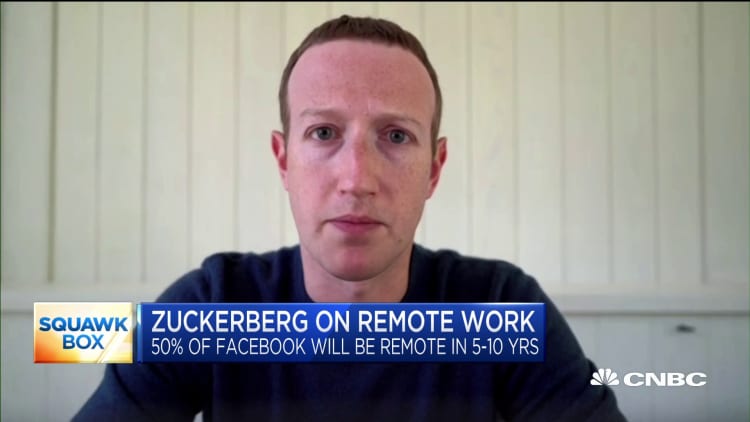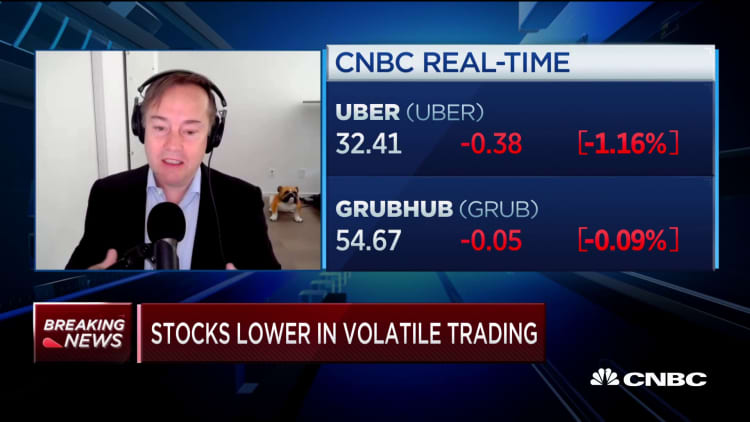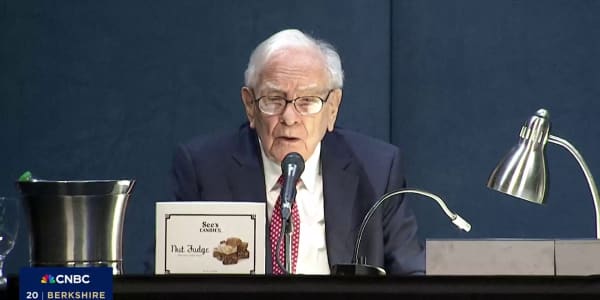If the business world has learned one thing from the pandemic, it's that their employees can work, and innovate, remotely. Employers once limited to local talent and offices are now free to hire anyone, to work from anywhere. In Silicon Valley, this newly distributed workforce has disrupted the region's long-standing business model which has, since its inception, relied on employee proximity.
Workers no longer need to live in the Bay area, so they aren't; San Francisco studio, one-bedroom, and two-bedroom rentals saw the biggest year-over-year decline in the country in September, falling by 31%, 24.2%, and 21.3%, respectively. Tech giants no longer need their massive employee campuses, so they're considering other options; Dropbox is ditching its offices for "studios" to facilitate in-person collaboration among pockets of now-remote employees across the country. Big tech's recruitment teams, once focused on the self-selecting pool of talent in a narrow, and local, echelon of educated society, can now tap talent from anywhere, potentially diversifying their workforces in the process. Even venture capital deals, the literal seeds of these tech giants, have moved from dinners and drinks in the Valley to Skypes and Zooms online.
Tech's long-standing tradition of staying, growing, and circulating talent within Silicon Valley has enabled the region to become and remain the epicenter of U.S. tech culture and innovation. In its 70 years, the area has produced the behemoths that put the United States on the map, technologically: Apple, Facebook, Alphabet, Twitter, Oracle, Hewlett-Packard and Intel. And with them, Santa Clara county has grown into a hub of wealth, generating over $316 billion in GDP in 2018. Silicon Valley currently provides 1.7 million jobs, and until now, those jobs were concentrated in the San Francisco Bay area.
About halfway through 2020, just two months into the coronavirus pandemic, Jack Dorsey announced that his nearly 9,000 employees across Twitter and Square could work from wherever, forever. By the end of May, 95% of Facebook's more than 45,000 employees were working off-campus. Now, early November, all of Alphabet's 200,000 contract and full-time employees around the world are currently working off-campus, and they will be able to continue doing so until June of 2021.
Mapping out a distributed workforce
Though the shift to remote work was expedited by an unforeseen global health crisis, tech giants were already considering a distributed workforce before March of this year. Jennifer Christie, Twitter's chief HR officer, told CNBC that enabling "Tweeps" to work from anywhere has been a key business objective for some time. Though some employees did utilize Twitter's Flexible Work Program prior to the pandemic, more employees have now asked to work from home permanently. When Facebook's offices reopen, the 95% of employees currently working remotely are also unlikely to return in full force. Facebook told CNBC that "we have long considered the option of remote work, and our thinking on this has accelerated during this time." Facebook is now working toward a 50% remote workforce over the next 10 years.

Big tech's intentional dispersal of talent may be part of a larger movement. According to the most recent Joint Ventures' Silicon Valley Index, the area's regional GDP increased by $17 billion from 2018 to 2019, following a consistent year-over-year revenue and job creation trend. However, the report also tracks a trend of domestic out-migration, consistent over the past three years. Population growth in Santa Clara and San Mateo counties from 2015 to 2019 is as slow as it was in the years following the dot com bust.
And, much like the aftermath of the dot com bust, the biggest population movements in the region have been caused by newly unemployed renters abandoning their apartments, according to real estate company Compass.
Distributed though they may be, the big tech labor forces are anything but stagnant. Facebook expects to make 10,000 global engineering and product hires for the year, many of them remote. The giant accelerated hiring for permanently remote positions on July 1, focusing on making the U.S. remote hires in extended areas surrounding Facebook's existing offices. From there, Facebook expects to create hubs in geographically dispersed locations across North America.
The company told CNBC, "These hubs won't be offices but physical spaces where people working remotely nearby can gather to attend important training sessions and meetings — and build community."
Twitter's labor force is likely to grow as well; CHRO Christie recorded a 10x increase in visits to the platform's jobs portal after CEO Jack Dorsey's remote-work policy announcement in May.
Despite the plans for remote hires and the out-migration trend, Facebook is one of multiple big tech companies that have continued with commercial space construction in the Bay area. According to the Silicon Valley Institute for Regional Studies, 18 million square feet of commercial space are currently under construction in the region, although delays in project completion are expected in the second half of the year. Of those in-progress projects, four buildings totaling nearly 770,000 square feet are slated for Facebook, and others are for Adobe, Microsoft, NVIDIA, and JPMorgan's new fintech headquarters. This month, Google closed on an additional 42,000 square foot lease in San Francisco.
Google completed a separate building project at Moffett Place in the second quarter of 2020, one of 10 large commercial space developments completed in Silicon Valley in the second quarter of 2020. Two of the others were buildings preleased by cybersecurity company Proofpoint.
According to Cushman & Wakefield, while Silicon Valley has been growing, so have other big tech hubs across the country. From 2010 to 2019, 58 of the 89 Bay area-headquartered tech and life sciences companies took on substantial office space in cities outside of California. Austin, Seattle, New York and Chicago top the list of hot spots for tech office space, although San Francisco still secured more space than all other U.S. markets combined over the same period.
Robert Sammons, senior director of Bay Area Research at Cushman & Wakefield, says that while newer tech hubs will continue to grow over the long term, he expects Silicon Valley to remain relevant.
Even if Facebook, Dropbox, and others adopt the hub-and-spoke office model to accommodate a distributed workforce, Sammons expects office development to stay in the urban centers big tech has already bet on — Austin, Dallas, Chicago, Seattle and New York.
According to Sammons, before thea pandemic, San Francisco was the tightest and most expensive market for office space. The costs, however, are not what encouraged companies to seek space elsewhere. Instead, he says, the biggest driver for tech companies looking outside Silicon Valley for the past decade has been talent.
Disperse and diversify
Leading up to the pandemic, big tech was expanding its footprint in markets outside of Silicon Valley and thus expanding its talent pool, but those markets — like New York — still posed an enormous cost of living obstacle for lower-income talent looking to break into the industry. The shift to virtual everything, however, could end up opening the door for that talent. Networking events, internships, and training camps in the notoriously expensive Bay area are now held online, eliminating travel, living, and ticket costs and extending learning and networking opportunities beyond the disproportionately white, male, moneyed, well-connected pool of talent concentrated in the area.
For Twitter, Jennifer Christie told CNBC via email that a decentralized workforce means building out local teams to support a global talent pipeline. Facebook also hopes its planned "hubs" beyond the main campus perimeters "will unlock remote talent and help us attract more talent that has historically been underrepresented in our workforce and industry."
Twitter recently unveiled a 2025 goal for its workforce representation: the company plans for its workforce to be 50% women and in the U.S., at least 25% from Black, Latinx, multiracial and Indigenous communities, all of which are traditionally underrepresented in tech.
Michael Ellison, founder of coding education nonprofit Codepath, admits that the new, remote normal could present an opportunity to diversify talent pipelines, but ultimately, it may not make much of a difference. Silicon Valley hiring is broken, he says. A hiring model that hasn't changed dramatically since the area's inception in the 1970s will not engender a dramatically changed workforce. According to Ellison, tech giants need to change the way they search for and evaluate talent if they're going to disrupt the cycle of homogeneity in the industry.
"Place-agnostic" portfolios
In line with the rest of the Silicon Valley ecosystem, deal-making has also shifted online. In venture capital, like everywhere else, introductory lunches, coffees, and happy hours were suddenly held over Zoom. Networking, the steadfast and arguably impenetrable cornerstone to venture capital funding in Silicon Valley, went virtual overnight.
Without geographical complications, less plugged-in founders from across the country could theoretically connect with Silicon Valley venture capitalists much more easily than pre-pandemic. Fully virtual conferences remove many of the barriers to networking that founders have traditionally hurdled. No venue space, catering, or travel translates to much less expensive tickets for attendees, opening the door a bit wider for founders outside the Silicon Valley bubble.
Theresia Gouw, founding partner of venture capital firm Acrew, says that without commute and travel time, she's attending and actively participating in more virtual conferences herself, and so are other investors. Lightspeed Venture Partners' Nicole Quinn is looking forward to attending the annual Web Summit this winter, and instead of the usual three-day journey to and from Portugal, this year she's committed to under an hour in front of her webcam. Quinn's portfolio includes Goop, Rothy's, Calm, and Daily Harvest and spans London, Los Angeles, New York and San Francisco. "Now, I could do board meetings for three of those companies in one day, whereas before, it was basically two days just for one board meeting with all the travel. ... I'm much more efficient."
Despite the convenience and efficiency of virtual work, for firms like Lightspeed and Acrew personal connections are still critical to dealmaking. Even if every other part of the process is done virtually, for Gouw, in-person connection with her portfolio companies is important. "If it's a successful company and it goes public, that's usually 8 to 10 years from now, so that's a long partnership," she said.
In Quinn's most recent deal, she co-led Lunchclub's $24 million funding round and helped to push the company's valuation to $100 million. From inception to close, the deal was made almost entirely over Zoom in less than a week. Quinn and Lunchclub CEO Vlad Novakovski met in person for a socially distanced walk at the very end of the process, after most diligence was done. Comfortable as she was with the virtual deal, Quinn emphasized that the interpersonal connection was crucial, as was thorough diligence. Without an extensive networking and courting period as is custom in VC deals, Quinn says, "References are so much more important."
Where to next?
Tech workers no longer bound by their commutes to Silicon Valley campuses can also, theoretically, move anywhere while maintaining their jobs.
According to Zillow data and Silicon Valley Institute for Regional Studies analysis, residential real estate inventory in San Francisco and San Jose was up 65% and 54%, respectively, from February to September of 2020. Compass data for the third quarter reveals that there were more home sales in the San Francisco area in Q3 of 2020 than in any of the third quarters of 2016 through 2019.
While the National Association of Realtors does not have any data on where those sellers may have resettled, Realtor.com's cross market demand research indicates that those in the Silicon Valley and San Francisco areas who were looking for homes outside of their county in 2020, were looking predominantly elsewhere in California. Of those in San Jose, Sunnyvale, and Santa Clara looking outside the state, over 10% were looking at homes in Texas, and over 6% were looking at Nevada.
However, without a visible end to the coronavirus pandemic, companies and employees in Silicon Valley are in a holding pattern on residential and commercial real estate moves. Cushman & Wakefield's senior director of Bay Area Research Robert Sammons says, "We have to get in a place where we have a vaccine so we can have certainty. Tenants have looked around, but very few have pulled the trigger."

Wherever innovators move, they'll likely expect their big tech employers to provide a healthy set of perks akin to those they'd receive on campus. The Verge's Casey Newton recently reported that a Facebook employee raised concerns about free food and drink typically provided on campus and no longer available in the remote work world. Facebook told CNBC that its remote work support includes childcare reimbursement, tutor and homework help for parents managing remote learning, and various forms of Covid-related leave. Twitter offers its Tweeps wellness classes and encourages company-wide "days of rest," in light of the global health crisis.
But office perks for tech employees include more than free chips and Hint water. Sammons emphasizes that many business leaders, Jack Dorsey notwithstanding, want their employees back in the office at least part of the time. Even in a hybrid work environment or in a hub-and-spoke office dispersal model, tech workers, who skew younger, are interested in remaining in an urban setting.
We're in inning one of nine, in the world of distributed work.Alexa von TobelManaging Partner, Inspired Capital
Due to the pandemic, the high cost of living and tight real estate market that once encouraged Silicon Valley employee out-migration is fading away. In Cushman's September study on the pandemic's impact on office infrastructure, the company concluded that the structural impacts of work-from-home trends will be offset by economic growth and population growth, meaning a continuously growing demand for office over the next 10 years. "Now we do have space, pricing has dropped. Down the road ... post-pandemic, we may see tech gravitate back," Sammons says.
Even international recruits, a crucial component of the Silicon Valley tech employee ecosystem, may still end up moving to the U.S. for big tech jobs after the pandemic, but they may find the up and coming tech hubs outside of San Francisco more appealing, thus supporting innovation in other cities.
Venture capitalist Alexa von Tobel says, "We're in inning one of nine, in the world of distributed work." The movement of talent out of Silicon Valley, either part of an ongoing trend or prompted by the pandemic, will be difficult to reverse. Von Tobel originally bet that innovation should shift away from Silicon Valley when she started her fintech company LearnVest in 2008, in New York. Twelve years later, she's still incredibly bullish on the East Coast and is managing partner of Inspired Capital. "I would bet on Silicon Valley 10 years from now, but I'd also bet on other tech hubs."





